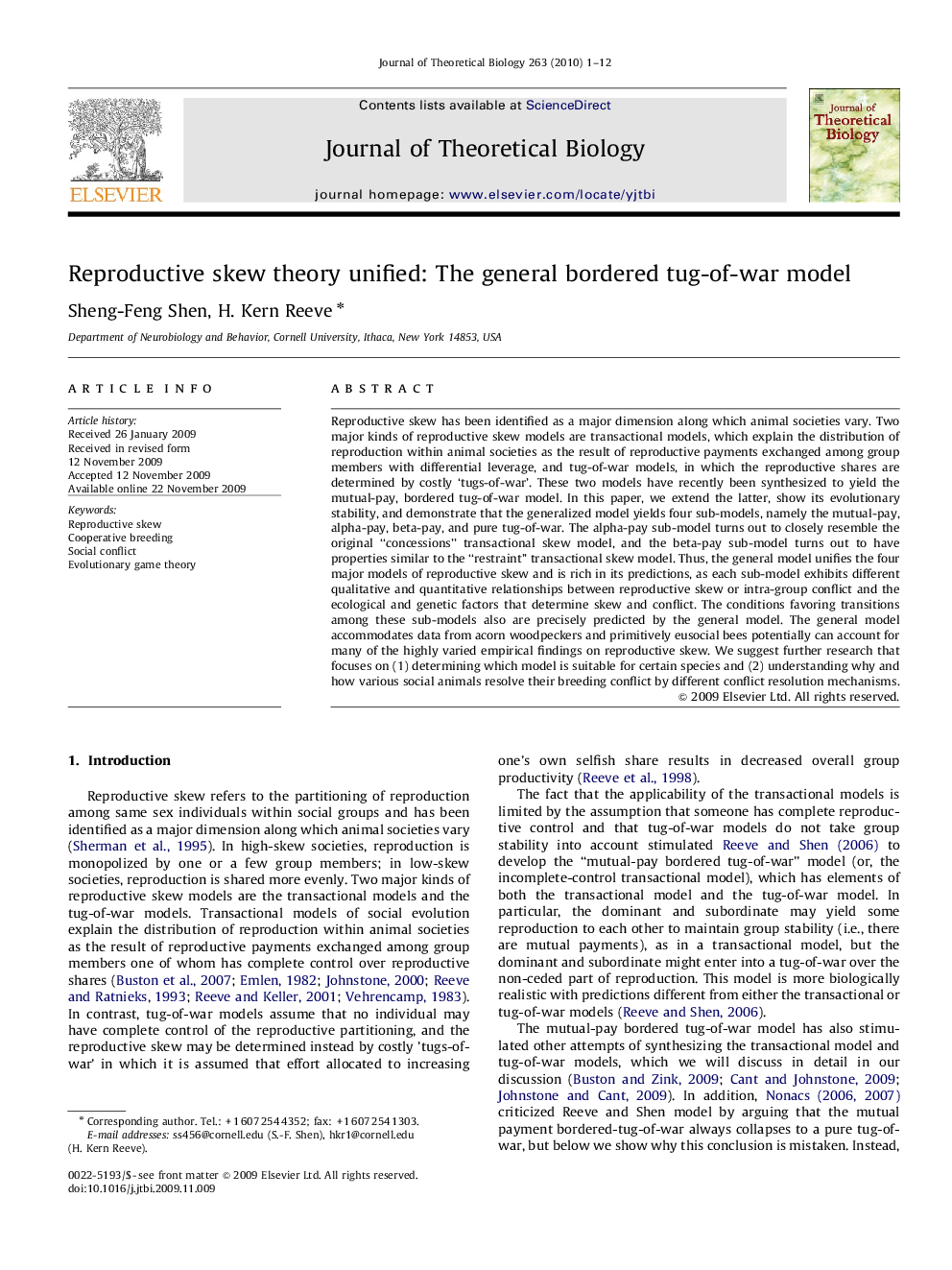| کد مقاله | کد نشریه | سال انتشار | مقاله انگلیسی | نسخه تمام متن |
|---|---|---|---|---|
| 4497412 | 1318933 | 2010 | 12 صفحه PDF | دانلود رایگان |

Reproductive skew has been identified as a major dimension along which animal societies vary. Two major kinds of reproductive skew models are transactional models, which explain the distribution of reproduction within animal societies as the result of reproductive payments exchanged among group members with differential leverage, and tug-of-war models, in which the reproductive shares are determined by costly ‘tugs-of-war’. These two models have recently been synthesized to yield the mutual-pay, bordered tug-of-war model. In this paper, we extend the latter, show its evolutionary stability, and demonstrate that the generalized model yields four sub-models, namely the mutual-pay, alpha-pay, beta-pay, and pure tug-of-war. The alpha-pay sub-model turns out to closely resemble the original “concessions” transactional skew model, and the beta-pay sub-model turns out to have properties similar to the “restraint” transactional skew model. Thus, the general model unifies the four major models of reproductive skew and is rich in its predictions, as each sub-model exhibits different qualitative and quantitative relationships between reproductive skew or intra-group conflict and the ecological and genetic factors that determine skew and conflict. The conditions favoring transitions among these sub-models also are precisely predicted by the general model. The general model accommodates data from acorn woodpeckers and primitively eusocial bees potentially can account for many of the highly varied empirical findings on reproductive skew. We suggest further research that focuses on (1) determining which model is suitable for certain species and (2) understanding why and how various social animals resolve their breeding conflict by different conflict resolution mechanisms.
Journal: Journal of Theoretical Biology - Volume 263, Issue 1, 7 March 2010, Pages 1–12